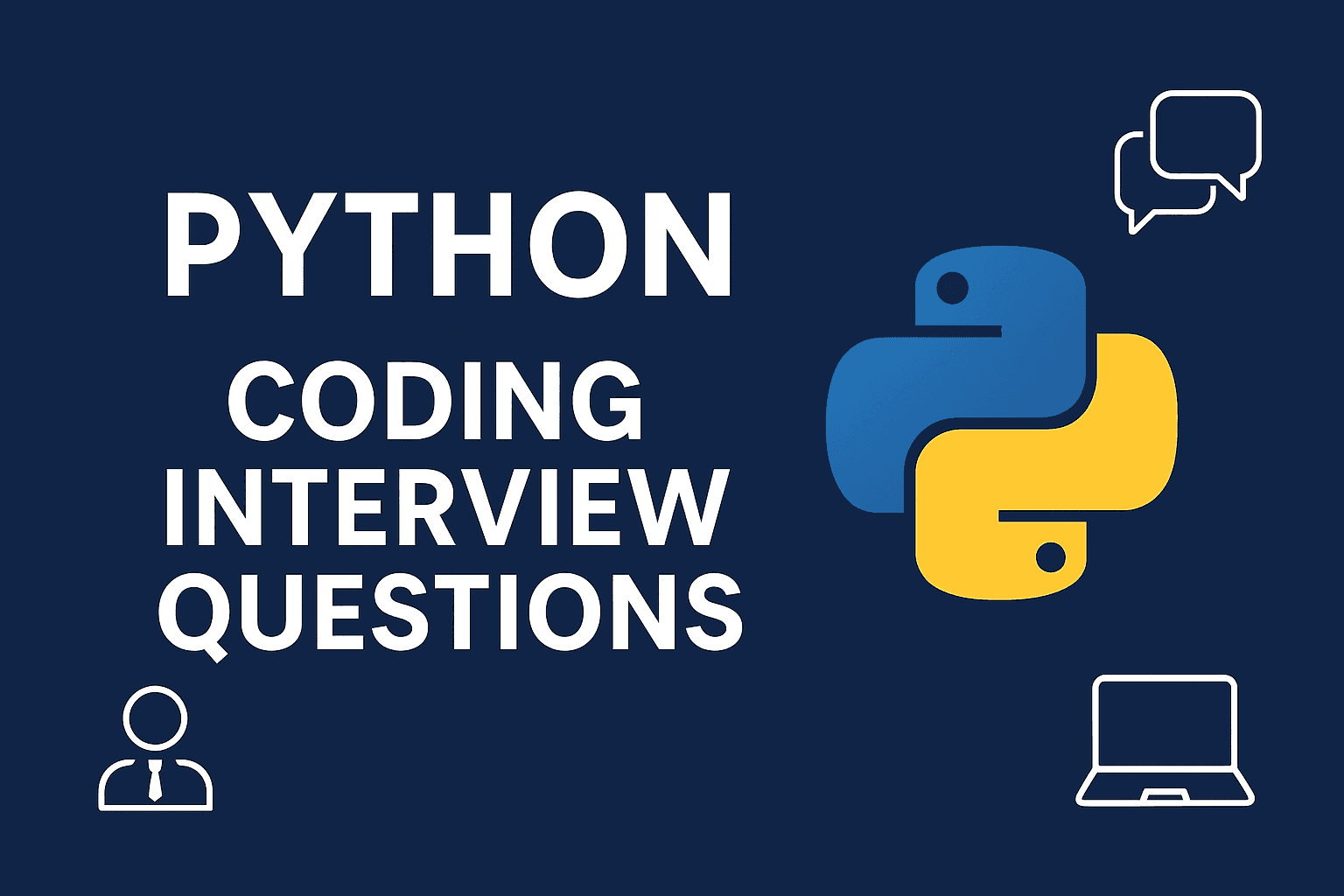If you’re preparing for a Python coding interview, you’re in the right place. Python has become the go-to language for developers in data science, automation, web development, and AI — which means it’s one of the most in-demand skills in the job market.
In this guide, we’ll go through a mix of basic, intermediate, and advanced Python interview questions, along with explanations and code snippets. By the end, you’ll have a clear understanding of what topics to focus on and how to approach problem-solving in interviews.
1. Introduction – Why Python Is a Must-Have Skill
Python is popular because it’s simple to read, easy to write, and powerful enough for serious applications. Whether you’re developing web apps with Django or Flask, crunching data with Pandas, or building AI models with TensorFlow, Python is everywhere.
That’s why interviewers love testing your core understanding and coding logic rather than just syntax. They want to see how you think — and how you use Python’s features to solve real problems.
2. Basic Python Interview Questions
These questions test your foundation. You should be able to answer them quickly and confidently.
Q1. What are Python’s key features?
-
Interpreted and dynamically typed
-
Easy syntax and readability
-
Extensive standard library
-
Object-oriented and functional programming support
-
Cross-platform compatibility
Q2. What are Python data types?
-
Numeric:
int,float,complex -
Sequence:
list,tuple,range -
Text:
str -
Set types:
set,frozenset -
Mapping:
dict -
Boolean:
True,False
Q3. What’s the difference between a list and a tuple?
-
List: Mutable (you can modify it)
-
Tuple: Immutable (cannot be changed once created)
Q4. Explain mutable and immutable objects.
Mutable objects (like lists, dicts) can be changed after creation.
Immutable objects (like strings, tuples) cannot be altered.
Q5. What are Python namespaces?
A namespace is a container that holds variable names mapped to objects.
Types include:
-
Local
-
Global
-
Built-in
3. Intermediate Python Coding Questions
Now that you’ve covered the basics, let’s move to questions that test your practical understanding.
Q6. What are Python decorators?
Decorators allow you to modify the behavior of functions or classes without changing their code.
Q7. What’s the difference between @staticmethod and @classmethod?
-
@staticmethod: Doesn’t take
selforcls. Works like a normal function inside a class. -
@classmethod: Takes
clsas the first parameter and can modify class-level data.
Q8. What are list comprehensions?
A concise way to create lists.
Q9. How does Python handle memory management?
Python uses reference counting and garbage collection to manage memory automatically.
Q10. Explain args and kwargs.
They allow flexible argument passing to functions:
4. Practical Coding Questions
These are commonly asked in coding rounds or online tests.
Q11. Reverse a string in Python.
Q12. Find the factorial of a number.
Q13. Check if a string is a palindrome.
Q14. Count vowels in a string.
Q15. Find the second largest element in a list.
5. Advanced Python Interview Questions
These test your deeper knowledge of Python internals and concepts.
Q16. What are generators?
Generators are iterators that yield values one at a time using yield, saving memory.
Q17. What are iterators and iterables?
-
Iterable: Any object you can loop through (
list,tuple,string) -
Iterator: Object that returns elements one by one using
__next__()
Q18. Explain Python’s GIL (Global Interpreter Lock).
The GIL allows only one thread to execute Python bytecode at a time. It simplifies memory management but limits CPU-bound threading.
Q19. Difference between shallow copy and deep copy.
-
Shallow copy: Copies references (using
copy.copy()) -
Deep copy: Copies entire objects recursively (using
copy.deepcopy())
Q20. Explain the use of lambda functions.
Anonymous one-line functions:
6. Data Structure and Algorithm Questions
These test your logic and ability to implement common patterns.
Q21. Reverse a list without using built-ins.
Q22. Find duplicates in a list.
Q23. Merge two sorted lists.
Q24. Find the most frequent element in a list.
7. Scenario-Based Questions
Q25. How would you design a REST API in Python?
-
Use Flask or FastAPI
-
Define routes (
@app.route) -
Handle requests and return JSON responses
-
Connect to a database (SQLAlchemy or MongoDB)
Q26. How can you handle exceptions gracefully?
Using try...except blocks:
Q27. How do you optimize Python code for performance?
-
Use list comprehensions instead of loops
-
Avoid global variables
-
Use built-in libraries like
itertoolsandcollections -
Profile code using
cProfile
8. Tips for Cracking Python Interviews
-
Know your basics well – Focus on syntax, loops, functions, and data types.
-
Practice coding problems daily – Use platforms like LeetCode, HackerRank, or GeeksforGeeks.
-
Understand real-world use cases – APIs, data handling, or automation tasks.
-
Write clean, readable code – Use descriptive variable names and comments.
-
Revise Python libraries – Especially
os,sys,json,re,datetime, andcollections.
9. Conclusion
Python interviews don’t just test how well you memorize syntax — they test how you think. Practice writing code that’s clean, efficient, and logical. Start with these questions, experiment with small projects, and you’ll be well-prepared for both technical rounds and coding assessments.

